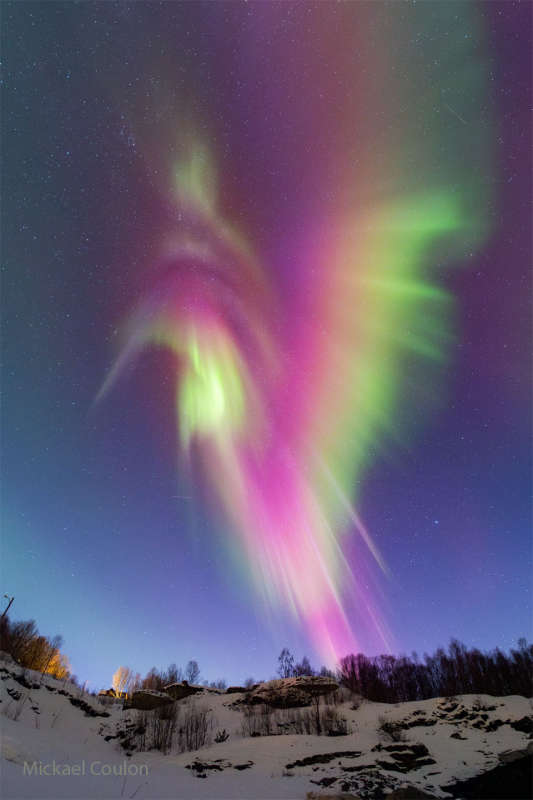Credit & Copyright: Mickael Coulon
Explanation:
Is this the largest hummingbird ever?
Although it may look like a popular fluttering
nectarivore,
what is pictured is actually a beautifully detailed and colorful
aurora,
complete with rays reminiscent of feathers.
This aurora was so bright that
it was visible to the unaided eye during
blue hour -- just after sunset when the
sky appears a darkening blue.
However, the
aurora only looked like a
hummingbird through a sensitive camera able to pick up faint glows.
As reds typically occurring higher in the
Earth's atmosphere than the greens, the real
3D shape of
this aurora would likely appear unfamiliar.
Auroras
are created when an
explosion on the Sun
causes high energy particles to flow into the Earth's atmosphere and
excite atoms and molecules of nitrogen and oxygen.
The
featured image was captured about two weeks ago above
Lyngseidt,
Norway.
1999 2000 2001 2002 2003 2004 2005 2006 2007 2008 2009 2010 2011 2012 2013 2014 2015 2016 2017 2018 2019 2020 2021 2022 2023 2024 2025 |
Yanvar' Fevral' Mart Aprel' Mai Iyun' Iyul' Avgust Sentyabr' Oktyabr' Noyabr' Dekabr' |
NASA Web Site Statements, Warnings, and Disclaimers
NASA Official: Jay Norris. Specific rights apply.
A service of: LHEA at NASA / GSFC
& Michigan Tech. U.
|
Publikacii s klyuchevymi slovami:
aurora borealis - severnoe siyanie
Publikacii so slovami: aurora borealis - severnoe siyanie | |
Sm. takzhe:
Vse publikacii na tu zhe temu >> | |
